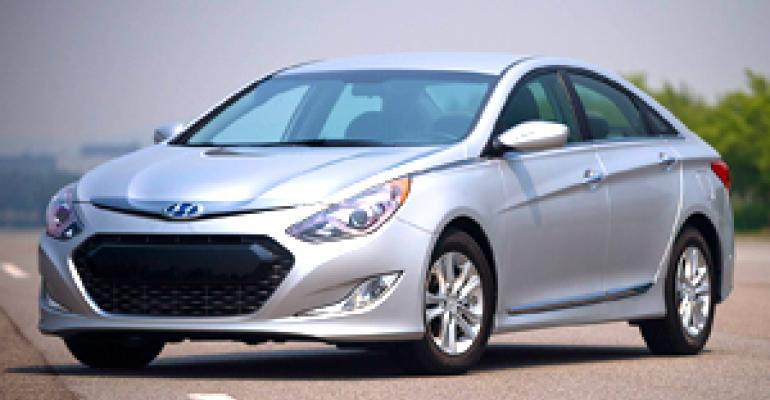
SUPERIOR TOWNSHIP, MI – The ’11 Hyundai Sonata is a highly styled breakthrough vehicle and the auto maker is not dialing back the design of its successor, says Hyundai Motor America chief John Krafcik.
“We will strive for another version of a really aspirational design for the next generation Sonata,” Krafcik says at HMA’s technical center here.

“It’s going to be bold and it’s not going to be a more conservative design, because I think that would be a terrible direction to give our studio right now considering the roll they are on.”
Rumors have been swirling since the family sedan was launched in the U.S. last year that Hyundai’s top brass in Seoul thought the car’s swoopy design was too radical and wanted the next-generation’s design to be more conservative.
Those concerns likely have been tempered by skyrocketing sales. Sonata deliveries were up 29% through June in a weakening sales environment, according to Ward’s data. Sales of Hyundai’s new dramatically styled Elantra compact also are running strong.
Besides catapulting retail deliveries in a segment where a high percentage of low-profit sales to rental fleets are common, Sonata’s cutting-edge design has helped redefine the Hyundai brand in America. Just a few years ago, the Korean auto maker was considered a producer of bland, low-priced cars with good warranties.
Before that, Hyundais were considered cheap cars with poor quality.
Thanks to a curvy new design concept called fluidic sculpture that started with the Sonata and now is migrating to the new Elantra and Accent small cars, Hyundai increasingly is being viewed as a styling leader.
That kind of notoriety leads to lower incentives and higher transaction prices that add barrels of cash to an auto maker’s bottom line.
Demand is so high for the Sonata and Elantra that they have the lowest sales incentives in their segments, Hyundai says. Neither has any cash on the hood, only lease specials and low-interest financing, Krafcik says.
The Sonata has been so successful in helping Hyundai raise its image that some observers are starting to compare it with the ’86 Ford Taurus, which launched the Detroit auto maker into one of its most profitable eras.
But historically, once a car or truck is a bona fide home run, there is corporate pressure to tone down designs in mostly unsuccessful efforts to broaden appeal.
Krafcik says that won’t happen with the Sonata.
“When you look back at other automotive companies that have breakthrough design successes like (the Sonata), often the next-generation product is a step backward,” he says. “This happened with the original Ford Taurus and happened recently with the (new) Honda Civic.”
In Ford’s case, market research was done a relatively short time after the Taurus went on sale. The early research showed many potential buyers walked away because the design was too radical.
But after a slow start, buyers warmed to the car’s new look and the first-generation Taurus became one of Ford’s most successful cars ever.
Unfortunately, when it was time for a refresh, designers paid too much attention to the early consumer research. They were overly cautious on later versions and the once-innovative Taurus grew stale.
“As we are planning the next generation Sonata we have written down as rule No.1 we will not do that,” Krafcik says. “Will it be fluidic sculpture? It will probably be some evolution of that.”




